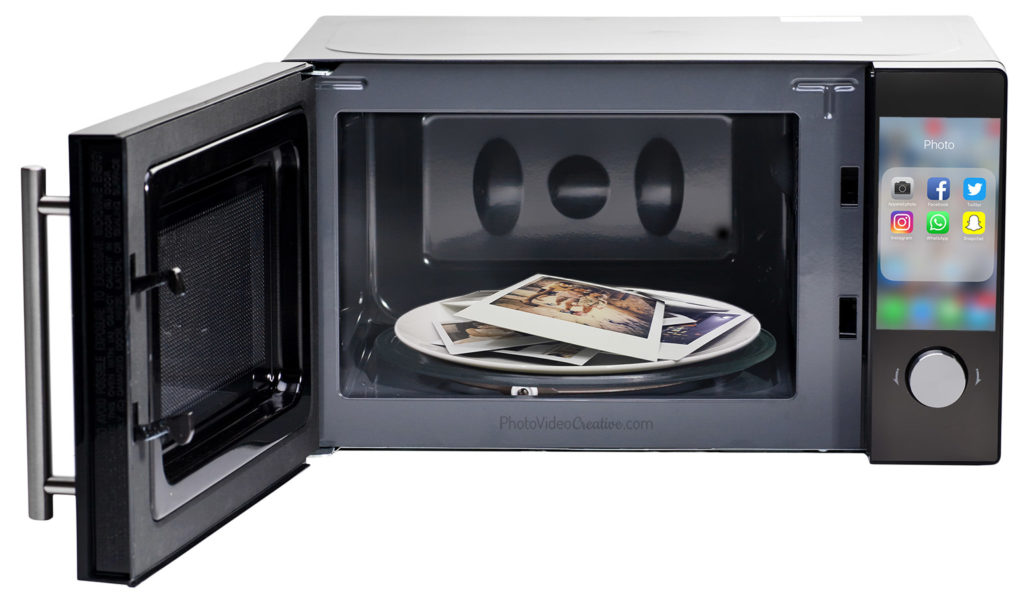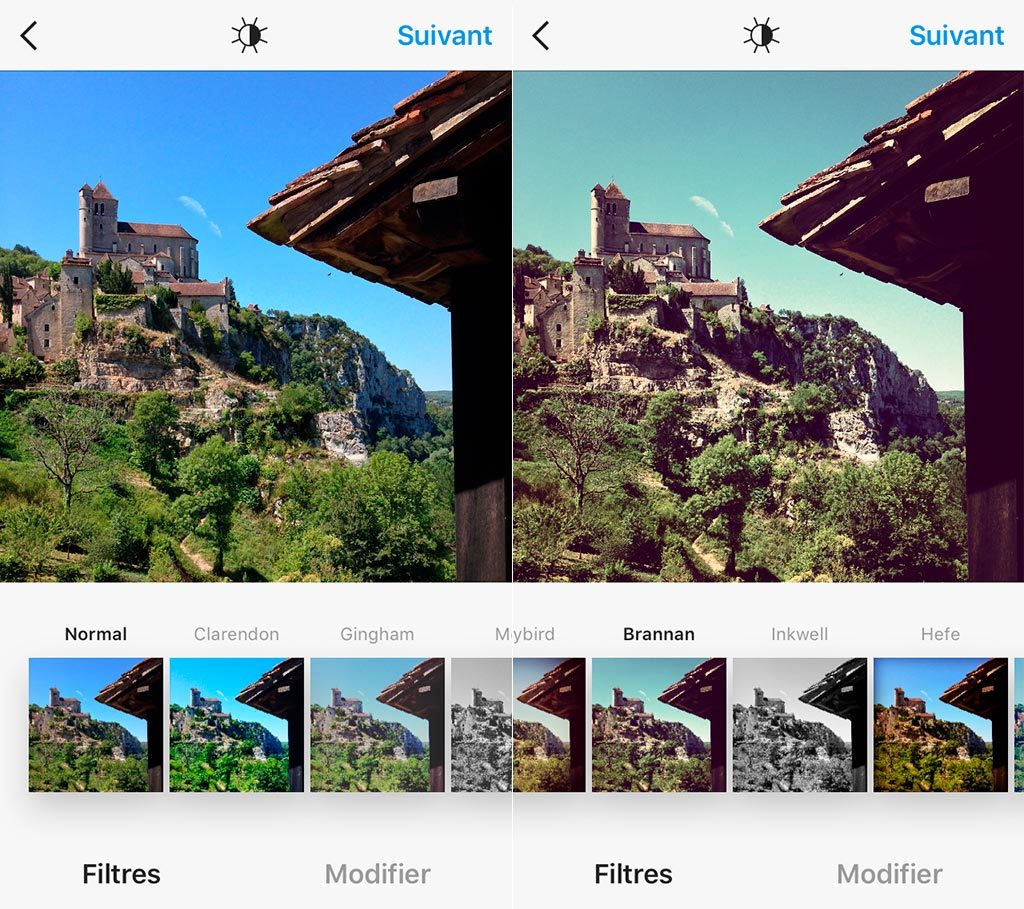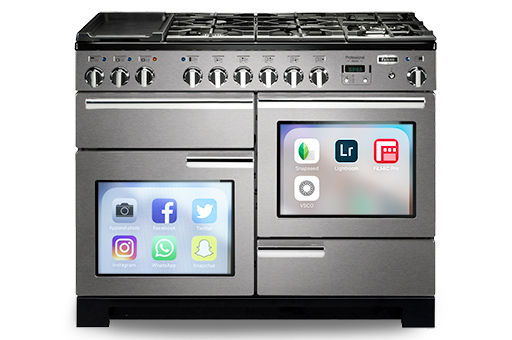
Is the smartphone the worst photo camera ever? Is the mobile photography doomed to take only basic pictures, as quickly taken and shared as a vulgar cooked dish warmed in the microwave? Are the limits of our smartphones the true explanation for the banality of those billions of images that circulate today?
The Smartphone, The Most Popular Camera In The World
It’s no news for anyone, smartphones are in any pocket: more than three quarters of phones sold worldwide are smartphones. It sells 100 times more smartphones in the world than Japan designed digital cameras (1).
In France, an API / IPSOS survey in 2014 shows that within the last 5 years, smartphones have outnumbered traditional cameras. And as mundane as a microwave oven in our kitchen.
The Smartphone, A Keyboard With A Picture Button
What are the most used applications on a smartphone? Within the thirty applications on average on our smartphones, a dozen are used daily. And only 3 or 4 applications retain 80% of our time: FaceBook, YouTube, WhatsApp and your web browser.
What are the applications that share more pictures? The picture oriented instant messaging app Snapchat is on the podium since 2013, closely followed by WhatsApp and Facebook. And Instagram is growing rapidly.
What does this show us? A smartphone is first used as an everyday communication tool. Where the millennial generation (under 35 years old in 2016) was the SMS generation, Generation Z (under 20 years old in 2016) no longer prefers text, but image.
But now that we send a photo as fast as we can write “LOL”, what is really the value of pictures taken with our smartphone?
The More We Think Photo, The Less We Think Smartphone
Make a photo/video with your smartphone is often related to “casual shooting”. When asked about their use of their smartphone as a camera, French people state in a poll that they take picture:
- in their workplace
- with their friends
- for a walk in the city or country
- in concert, sporting event or other public event
Conversely, the occasions where the smartphone is the less picked-up camera, are:
- for major events: wedding, baptism, birth, birthday…
- for holidays or travel
- with their family
In other words, the use of a smartphone is still closely linked to the state of mind in which we apprehend a given event. More an event will be perceived as strong and personal, the more we want to capture it with the “best” possible camera.
The Smartphone Photo: Almost An Accident
But is a smartphone necessarily a “bad” camera? Let’s step back from our photographic approach with a smartphone. During those casual opportunities to shoot with a smartphone, we are not actively hunting photos. Taking photo is not our primary concern because the lived moment is felt to be forgettable, rightly or wrongly. We take out of our pocket a smartphone as fast as we put it back: the photographic intent can only be nonexistent.
Very little attention will be paid to position ourselves correctly against the subject or scene, nor to frame thoughtfully:
- is the subject highlighted in its environment?
- is there any background or foreground that will hurt the picture?
- will the eye be prompted to browse the picture, …?
We will not have any vigilance against the attitude of the subject:
- Is he smiling or grimacing?
- Does not he close his eyes?
- Does he not turn me back, …?
nor the lighting conditions:
- Is it light too harsh?
- Does the light come in from the right direction?
- Is the lighting not too dark, …?
In the end, we certainly have a “memory” that has captured the moment, but its emotional charge will remain very weak. As you see, many of the fundamental creative decisions for a picture have nothing to do with the device itself. We make a “smartphone picture” as we buy a cooked meal. Because we are hungry right here and right now, rarely to get a little gourmet enjoyment.
The Smartphone, Too Simple To Be Serious?
When we hold a “real” camera in hand, our approach is usually very different. A bridge, a hybrid or a DSLR can not be put easily in our pockets. We must actively make the decision to take photos / videos, and thus to bring over our camera. Mechanically, the photographic intention is so much stronger. Even without being an accomplished photographer, everyone feels a little more invested in the way we shoot.
There is a good chance that we then take better pictures than from our smartphone. Not because a “real” camera is technically better, but because we have taken more care to make a picture. It’s even truer with a camera viewfinder. Simply putting our eye through it makes ourself isolated from our environment. You are completely absorbed by the picture you wish to shoot. When we cook, we always put a little effort to make it out of the ordinary.

Yet, what prevents us from adopting the same photographic approach with a smartphone? All our reflexes of “homo photographus” seem to disappear as soon as we have a smartphone in hands. It requires so little effort because of its weight, its size, and its ease to trigger that we forget the necessary effort to make a picture: we just take a picture.
The Smartphone, That Digital Polaroid
A good compact camera proposes to adjust its presets for contrast of tones or color saturation before shooting. Smartphones do not offer any. We then find shots that are often very (perhaps too) contrasted and saturated. We remain in a standardized picture rendering, just like in the days of classic films. Every film (Kodak Gold, Fujifilm Reala …) had its own visual signature in terms of color rendering and contrast.
The mobile application Instagram has popularized the use of photographic filters. Its ready-to-use image processing recipes play on the classic contrast and saturation. But they touch more specifically the color balance with color cast in dark, high or mid tones.

Instagram takes part in the resurgence of classic film renderings. The rendering and format of Polaroid is openly targeted.
But whether raw shot (rendering dictated by the manufacturer) or consumer applications (like Instagram), the produced photo remains within the standards defined by others. Like any cooked dishes made with more or less taste, we may have a large choice, but it not possible to adjust their preparation.
The Smartphone, A Photographic Mutant
In 2016, any DSLR beats on technical quality criteria any smartphone at the same price. Whether the resolution (megapixels), the possibilities of field of view (focal length and zoom), optical stabilization, sensitivity (ISO), dynamic or flash, a standard smartphone does not offer more than a low / midrange compact camera.
But since 5 years at least, innovations even for high-end cameras stagnate. The updates are anything but spectacular: the qualitative gains of the photos produced remain imperceptible, except perhaps for sensitivity in low light.
Conversely, smartphones are bridging the quality gaps at a steady pace every single year. With the iPhone 7 Plus, Apple brilliantly demonstrates that smartphones will increasingly monopolize the technical possibilities of “real” cameras. Smartphones will conquer the field of bridge cameras with their optical zoom. And they will also go into the field of hybrid / DSLR camera with beautifully blurred background portraits and better sensitivity.
Still, there are areas of creative photo that are really not recommended for smartphones. But as long as we understand the limits of field of view and dynamic range of the smartphones, the creative possibilities are still immense. The tension between technological limits and creative capacity never prevents photography to take a major place. Smartphones are no exception.
But what makes the smartphone truly remarkable is its unique position among our tools. The smartphone is the only one which covers seamlessly the whole spectrum of the creative journey:
- shooting is possible everywhere and all the time: no excuse for not doing pictures
- processing / development / post production is as extensive as with a computer, as long as one chooses well its mobile application,
- displaying on a smartphone screen is always bigger than our traditional cameras,
- a form factor allowing to be passed from hands to hands like good old prints
- immediate sharing on our social networks
The more the creative flow is fast and frictionless, the more it allows to be faithful to the original emotions of the shooting moment.
The Smartphone, The New Premium Cooker?
The smartphone is not a bad camera: it continues to surprise us technically. It has a unique creative potential that is often neglegated and misunderstood. It asks as much care as any other camera in terms of photographic intent. If the photographer is truly the actor of this endeavour, then the smartphone could move from the status of being the microwave oven of photography to the genuine premium cooker! A great photo is always the outcome of the photographer, not the camera.

Does it make you react, enlighten you or puzzle you? Please leave a comment below!
Want to learn more about how to create beautiful photos with your smartphone? Do not miss my next posts: subscribe to my newsletter and get my free eBook!
– Amaury Descours.
(1) The CIPA association includes all Japanese camera manufacturers (Canon, Nikon, Panasonic, Ricoh / Pentax, Sony / Minolta, Olympus, Epson, etc.), meaning the vast majority of the camera manufacturers worldwide . It lacks “only” the Korean Samsung and European much more elitist brands like Leica and Hasselblad.